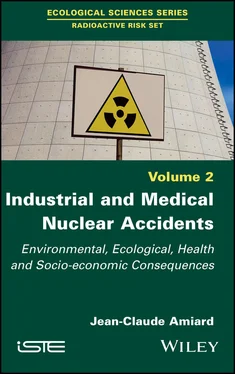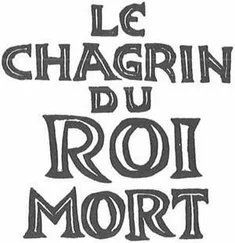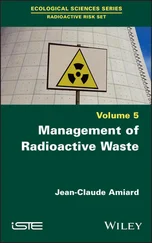1 Cover
2 Preface
3 Acknowledgments
4 List of Acronyms
5 1 Classification of Civil, Industrial and Medical Nuclear Accidents
1.1. Nuclear accident or radiological accident? 1.2. Classification of nuclear accidents. Incident or accident? 1.3. Classification of radiological accidents 1.4. The typology of accidents 1.5. What are the main nuclear accidents? 1.6. Information on nuclear energy
6 2 Accidents Related to Nuclear Power Production2.1. Introduction 2.2. Accidents in the nuclear fuel cycle 2.3. Accidents in laboratories 2.4. Other accidents 2.5. Waste management incidents 2.6. Incidents in the transport of radioactive packages 2.7. Environmental consequences 2.8. Health consequences 2.9. The cost of accidents 2.11. Conclusions
7 3 The Extremely Serious Nuclear Accident at Chernobyl3.1. Introduction 3.2. The facts 3.3. Spatial and environmental consequences 3.4. Ecological consequences of the Chernobyl accident 3.5. Health consequences 3.6. Social consequences 3.7. Consequences in Europe and France 3.8. Economic consequences 3.9. Long-term management of the Chernobyl accident 3.10. Conclusion
8 4 Fukushima’s Serious Nuclear Accidents4.1. Introduction 4.2. The course of the Fukushima accidents 4.3. Actions taken by the Japanese authorities 4.4. Environmental contamination 4.5. Exposure and effects on flora and fauna 4.6. Health consequences 4.7. Economic consequences 4.8. The situation in 2016 and 2017 4.9. Conclusions
9 5 Industrial and Medical Radiology Accidents5.1 Introduction 5.2. Industrial and medical applications 5.3. Radiological criticality accidents 5.4. Radiological accidents related to the loss of radioactive sources 5.5. Radiological accidents with radioactive sources and industrial accelerators 5.6. Medical radiological accidents 5.7. Conclusions
10 Conclusion C.1. Comparison of the Chernobyl and Fukushima accidents C.2. Consequences of nuclear accidents on the physical environment C.3. Ecological consequences of nuclear accidents C.4. Adaptation of organisms to radiation C.5. Health consequences of nuclear accidents C.6. Social consequences and perceived risk of nuclear accidents C.7. Probability of a new nuclear accident C.8. Costs of civil nuclear accidents C.9. Future of civil nuclear power
11 Glossary
12 References
13 Index
14 End User License Agreement
1 Chapter 1Table 1.1. The severity levels of a nuclear event. The INESTable 1.2. The ASN-SFRO classification for radiological accidents (adapted from ...Table 1.3. Procedure for the classification of an event on the basis of exposure...Table 1.4. List of nuclear accidents in the civil field classified in order of d...
2 Chapter 2Table 2.1. The most significant accidents that have occurred in civil nuclear in...Table 2.2. Type and level of exposure of the population of Beaumont-Hague caused...
3 Chapter 3Table 3.1. Inventory of 137Cs, 90Sr and 239,240Pu deposits in the 30 km Chernoby...Table 3.2. Surface area in km2 and populations affected on January 1, 1995 accor...Table 3.3. Definition of the contamination zones in Belarus in kBq.m−2 (modified...Table 3.4. Concentrations in 137Cs and 90Sr in Scots pine trees growing above an...Table 3.5. Change in the number of abnormal cells in the meristem of winter rice...Table 3.6. Main exposed populations and average effective dose (mSv) (based on [...Table 3.7. Breast cancer incidence rate among women in the main population group...Table 3.8. Cancer incidence rates in the main population groups affected by the ...Table 3.9. Cardiovascular diseases and relationship with dose received (modified...Table 3.10. Incidence (per 100,000) of the 12 disease groups among liquidators (...Table 3.11. Incidence (per 100,000) of morbidity among adults and adolescents in...Table 3.12. Impacts (per 100,000) of juvenile morbidity in Gomel province, Belar...Table 3.13. The number of acute radiation syndromes among liquidators (adapted f...Table 3.14. Assessment of cancer deaths caused by the Chernobyl disaster since 1...Table 3.15. Number of additional deaths in Belarus, Ukraine and European Russia ...Table 3.16. Estimation of the various exposed populations following the Chernoby...Table 3.17. Average deposition of 137Cs from the most contaminated regions of th...Table 3.18. Estimate of the cumulative effective doses over 50 years received by...Table 3.19. Average deposition of 137Cs in the administrative regions of France ...
4 Chapter 4Table 4.1. Quantities of radionuclides released directly into the Pacific Ocean ...Table 4.2. Provisional regulatory values in different food categories applicable...Table 4.3. Provisional regulatory values in different food categories applicable...Table 4.4. Areas of agricultural land in hectares variously contaminated with ce...Table 4.5. Concentrations of iodine 131 and cesium 137 in water, milk, vegetable...Table 4.6. Thyroid doses in the first year for the most exposed group of adults ...Table 4.7. Percentages of workers who received various effective doses (modified...Table 4.8. Worker exposure scenarios for health risk assessment (modified from [...Table 4.9. Estimated doses to various organs under the four scenarios (modified ...Table 4.10. Groundwater pollution in the vicinity of the harbor between pumping ...
5 Chapter 5Table 5.1. Overexposure accidents to ionizing radiation reported by sector and t...Table 5.2. Loss of sealed sources resulting in deaths among members of the publi...Table 5.3. Loss of sealed sources that have caused serious injury to the public ...Table 5.4. List of accidents in industrial irradiation facilities (adapted from ...Table 5.5. Examples of TBq thresholds (constant D) of the most dangerous categor...Table 5.6. Main radiotherapy accidents involving patients and leading to erroneo...Table 5.7. The main causes of accidents in radiotherapy and brachytherapy (accor...
1 Chapter 1Figure 1.1. Chronology of the main criticality accidents (adapted from [MCL 00])...Figure 1.2. Trends in the various types of nuclear and radiological accidents wi...
2 Chapter 2Figure 2.1. The nuclear fuel cycle (modified from [TUR 97, PAT 02, NAU 08])Figure 2.2. The radioactive family of uranium 238 and its derivatives (according...Figure 2.3. Diagram of the Lucens experimental nuclear power plant (adapted from...Figure 2.4. Isotopic composition of plutonium in sediments (full circles) and su...Figure 2.5. Standardized collective effective dose per unit of energy production...Figure 2.6. Changes in the number of workers (in thousands) under surveillance (...Figure 2.7. Number of accidents involving nuclear reactors or causing high irrad...
3 Chapter 3Figure 3.1. Displacement of the radioactive plume over time (A April 26, B April...Figure 3.2. Areas highly contaminated in 1986 with cesium 137 (>555 kBq.m−2) (C ...Figure 3.3. Extractibilities of 90Sr and 137Cs from the surface soils of the Che...Figure 3.4. Contamination of various European areas with two levels of cesium 13...Figure 3.5. Post-accident effective dose (mSv) caused by the Chernobyl accident ...Figure 3.6. Change over time in the contributions of the different exposure path...Figure 3.7. Change over time in the contributions of the different exposure path...
4 Chapter 4Figure 4.1. The various evacuation and recommendation orders for the Fukushima a...Figure 4.2. The various areas around the Fukushima power plant on March 8, 2013 ...Figure 4.3. Relationship between the quantities of 137Cs deposited (Bq.m−2) and ...Figure 4.4. Overview of the most important processes concerning the radionuclide...Figure 4.5. Estimates of dose rates received by various ecosystems in the areas ...Figure 4.6. Schematic representation of the growth of Japanese pines on control ...
Читать дальше












